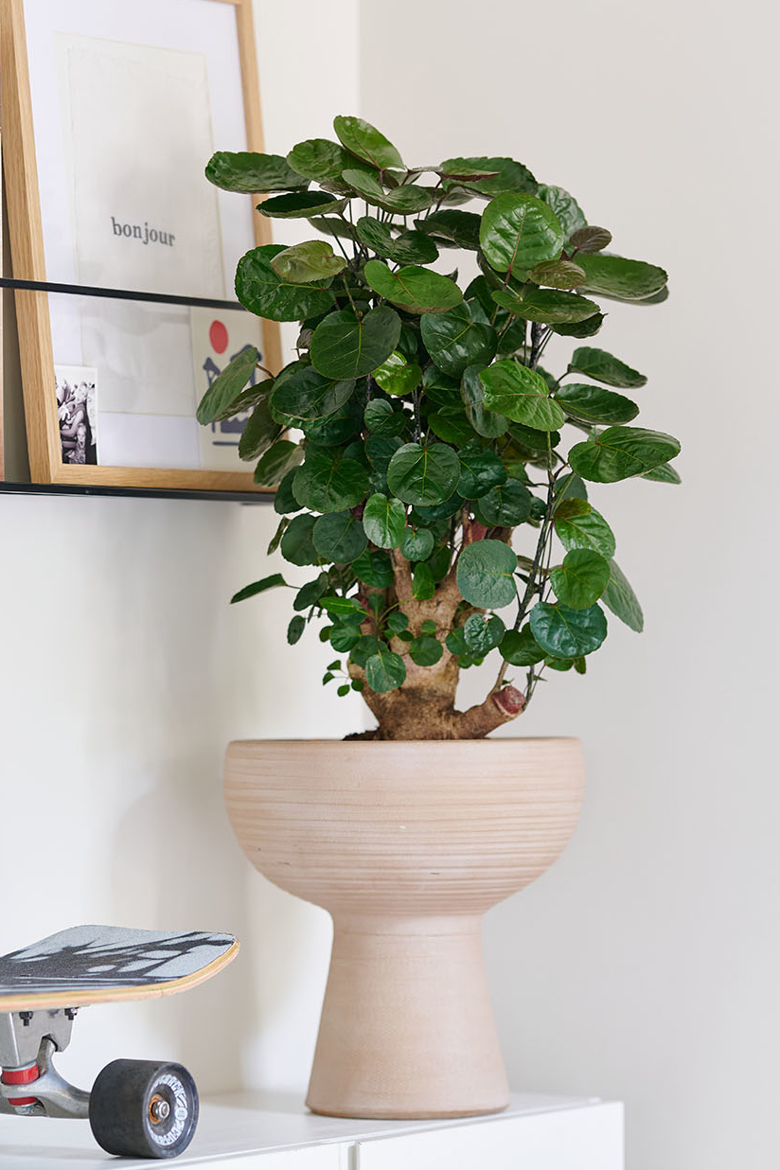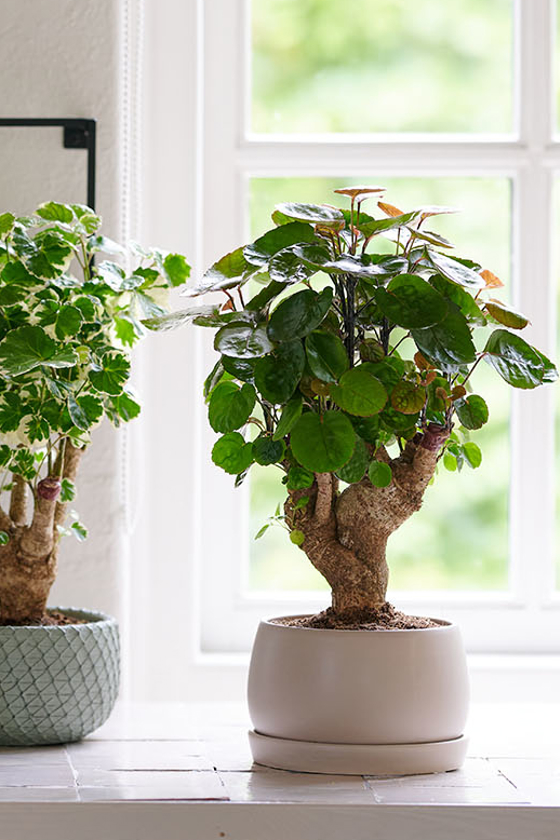Aalsmeerderweg 943
1435 EP Rijsenhout

Polyscias
Originally from regions around the Pacific Ocean, this striking presence is anything but showy.

Characterful foliage
Remarkably resilient. A perfect fit for any space
The Polyscias is an elegant houseplant with lush, expressive leaves that vary by variety. Originally from regions around the Pacific Ocean, this striking plant does not seek the spotlight, but quietly adds presence and charm.
Though incredibly tough and adaptable, the Polyscias does appreciate a bit of routine. Give it small, regular amounts of water and care, and it will reward you with strong branches and beautiful foliage.


With the right care, the Polyscias will remain a stylish and resilient eye-catcher in your home for years to come.
Polyscias care
Watering
The Polyscias is tough and forgiving, but to keep it in top shape, regular watering is key.
It prefers small amounts of water on a steady schedule. The soil should stay slightly moist – not too dry, but never soggy. Make sure excess water can drain away easily to prevent root rot.
In winter, the plant needs less water as its growth naturally slows down.
Light
The Polyscias feels most at home in a bright spot with plenty of indirect sunlight, though it can handle a bit of shade too. Give it enough light, and it will reward you with strong, healthy growth.
If the plant gets too little light, it may become leggy and start dropping leaves. Direct sunlight is best avoided, as it can scorch the leaves. So choose a spot with soft, filtered light – no harsh sun needed.
Misting
As a tropical plant, the Polyscias appreciates a higher level of humidity. Lightly misting the leaves on a regular basis helps keep them fresh and healthy.
Especially during the dry winter months, extra misting is recommended to prevent the plant from drying out. Try to avoid placing it in a draught or right next to a heater, as this can lead to leaf drop.
Pruning
The Polyscias naturally grows compact and strong, but occasional pruning helps maintain its shape. Feel free to trim back long or weak branches to keep the plant full and bushy. You can also remove yellowing or dead leaves so the plant can focus its energy on new growth.
The best time to prune is in spring and summer, when the plant is actively growing. Did you know that pruning stimulates new branching? It’s a simple way to encourage even fuller and stronger growth.




